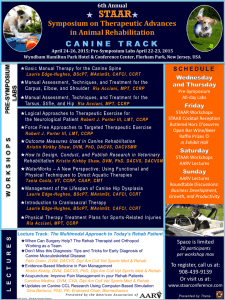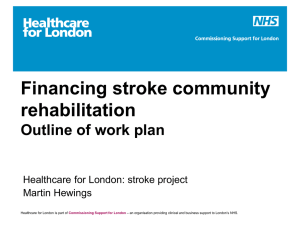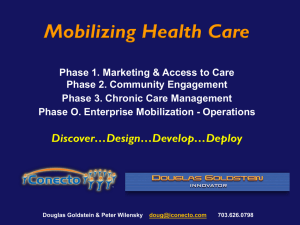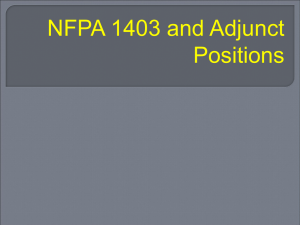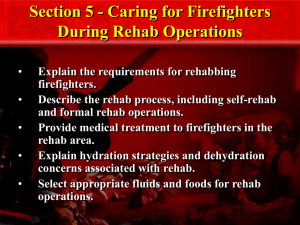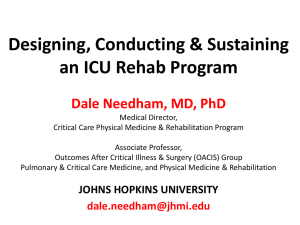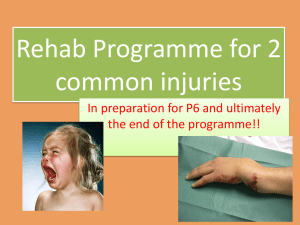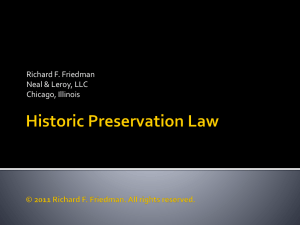Distressed, Disruptive and “Unmotivated” Clients
advertisement
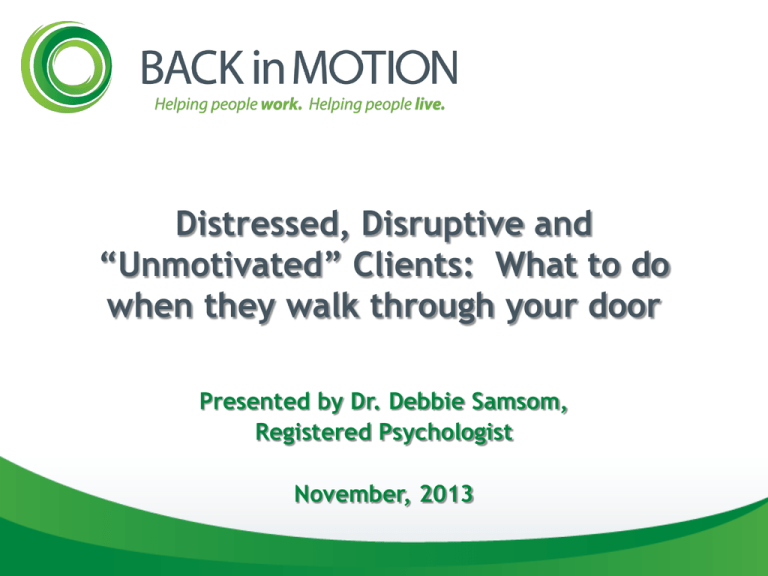
Distressed, Disruptive and “Unmotivated” Clients: What to do when they walk through your door Presented by Dr. Debbie Samsom, Registered Psychologist November, 2013 Distressed Clients: Do they have a mental health diagnosis? Symptoms of MH disabilities are multiple and varied depending on the diagnosis Focus on observations • Crying spells • • • • • • • Irritability Limited interpersonal skills Agitation Withdrawal from others Poor/inconsistent follow through Poor personal grooming Lack of participation in daily activities Ask the Client about what you observe Back in Motion Rehab Inc. Employment Planning Principles Strengths Vocational Interests Limitations/Barriers – strategies to address Workplace Supports and Accommodations *Level of employability is linked to what you discover here (not to a specific diagnosis) Back in Motion Rehab Inc. Where do we get information? Historical Information Available New Information Gathered • Community Agencies • Family Members • Referral for assessments (Medical, VocationalPsychological, Work Simulation Assessment) The Client Back in Motion Rehab Inc. The Client as a Source of Information Don’t be afraid to ask Insight (individual and diagnosis dependent) Duration of Mental Health Diagnosis Desire to Disclose Back in Motion Rehab Inc. Distressed Clients - Strategies Talk about the behaviours you see (or don’t see) Problem-solve with Client (What will help?) • • • • • • Medication review Increased self-care Change of schedule Disability Management workshop participation Referral to community services Program interrupt (with plan) Back in Motion Rehab Inc. Disruptive/Demanding Clients - Examples “People who project a negative and rude attitude.” “Within a workshop, Clients who are demanding and won’t let others talk” “Lack of self-control – being emotionally charged easily when not getting “yes” for answers” Back in Motion Rehab Inc. Disruptive/Demanding Clients - Strategies Be calm, empathic and respectful Have “difficult” conversations (tell the truth) Set boundaries and expectations People with mental health issues don’t want or need a “pass” Never say you’re too busy or don’t have time Document ethically and effectively Learn de-escalation skills Back in Motion Rehab Inc. Unmotivated Clients - Examples Mental health clients who won’t access the help they require Clients who don’t follow instructions Clients who avoid contacting employers for informational interviews Clients who are “lethargic” about their job search In other words, Clients who won’t do something that we think they should do. Back in Motion Rehab Inc. Motivational Interviewing References: O’Connell, D. (2013). Helping Clients to Change Behavior, presented at the 9th Annual Health Care Professional Conference. Vancouver BC. Miller, W & Rollnick, S. (2012). Motivational Interviewing, 3rd Edition: Helping People Change. New York: Guilford Press. What is MI? MI is a collaborative goal-oriented style of communication, with particular attention to the language of change. MI is designed to strengthen personal commitment to a specific goal by eliciting and exploring the person’s own reasons for change within an atmosphere of acceptance and compassion. Back in Motion Rehab Inc. Elements of MI? Focus is on your interaction with client Communication style is one of guiding (rather than directing or following) Collaboration (done with) Back in Motion Rehab Inc. Motivational Strategies: The Building Blocks Providing information Removing practical barriers Providing Choice Identifying the benefits of change Practicing empathy Providing feedback Clarifying goals Active helping Back in Motion Rehab Inc. 4 Processes of MI 1. Engaging: establishing a working relationship 2. Focusing: establishing an agenda 3. Evoking: eliciting client’s own motivation to change 4. Planning: committing to a specific course of action Back in Motion Rehab Inc. Ambivalence is Normal Explore ambivalence, rather than think resistance Develop a discrepancy between present behaviour and goals and values When a behaviour is seen as conflicting with goals, change is more likely to occur Client rather than the practitioner should present the argument for change Back in Motion Rehab Inc. Ambivalence is Normal The Client is not an opponent It’s not about winning and losing It’s not about convincing It’s not about telling someone what to do If asked for advise, give a set of options Remind yourself and the Client of their autonomy *The Client is the primary resource for finding answers and solutions Back in Motion Rehab Inc. Change Talk vs. Sustain Talk Change talk are statements that indicate some movement in the direction of change • “I need to do something about this” • “I suppose I could at least update my resume” Sustain talk are statements that indicate support for the status quo • “I don’t think I’m ready to get a job” • “I don’t see how that would help” Back in Motion Rehab Inc. Don’t Encourage Sustain Talk Questions that elicit sustain talk • What gets in the way of …? • What prevents you from …? • Why haven’t you …? Even empathic statements can encourage sustain talk so watch how you use them Back in Motion Rehab Inc. Evoking Change Talk Desire (I wish, I want, Wouldn’t it be great if) Ability (I could, I would be able to, I have done that in the past) Reasons (I would have more money, I would have something to talk about, I wouldn’t be bored) Need (Must, should, ought to, have to) Back in Motion Rehab Inc. Ready to Start Planning Look for signs of readiness • • • • Increased change talk Diminished sustain talk Increased resolve Envisioning Transition from Evoking to Planning • So where does all of this leave you? • What do you think you might do? Back in Motion Rehab Inc. Checking For and Strengthening Commitment Commitment – Is that what you intend to do? So, in order to get this going, what would you have to do first? Activating – How would you get ready? Are you willing to give that a try? Taking Action – So you checked out that website I sent you. I see that you are looking over the workshops we offer. Back in Motion Rehab Inc. Motivational Interviewing Empowers people to make positive changes Fosters pleasant relationships with our Clients Makes our job easier! Thank you Back in Motion Rehab Inc.

